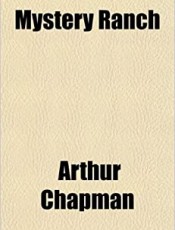i cannot guess how sanderson, had he lived, would have resolved this conflict between his house of vision and his great chapel, just as i can hazard no opinion of the ultimate form his interpretation of christianity would have taken. but the recognition of these conflicts is fundamental to my conception of the man and his significance.
he stands for a great multitude reluctant to abandon many of the familiar phrases of the christian use and eager to read new and deeper meanings into them. but he never took 'holy orders'; he knew the days of the priest, except for evil, were past, and it is only by its being born again as a house of vision that he could [pg 144]anticipate his chapel with contentment. the time has come for mankind to choose plainly between the priest and the teacher.
some six months after sanderson's death i went to oundle and visited the yarrow memorial, that abortive first house of vision. except for a bronze statue of a boy by lady scott that sanderson had liked and bought, it was as i had seen it with sanderson a year before. it was still, deserted, and i suppose i must count it dead. the time-charts had not been carried on. the collection of inventions, the display of humanity's growth, were still represented by empty cases. the statue was intended for the school chapel, but meanwhile it had been dumped in the house of vision as a convenient vacant place for such dumping. the bronze boy is in an eager pose; there is duty to be done and danger to be faced and a great creative effort to be made. 'send me!' he said, in that empty, neglected house of vision. but the hand that would have put that dart to the bowstring and aimed it at work and service was there no more.
building operations upon the chapel were proceeding slowly. the rising walls were very like[pg 145] the rising walls of the sort of church for respectable people that gets built in surbiton or beckenham. i gather that in all probability it will even carry the debt customary in such cases. the new headmaster was, i found, a thoroughly pleasant man who came not from an elementary school but from eton, and had never met sanderson in his life and knew nothing of his work. he seemed disposed to regard sanderson as a bit of a crank and to be intelligently puzzled by his originalities. i felt assured that when at last that old corrugated-iron building is abandoned for the new chapel there would be pews in the new nave in spite of sanderson, and services of an altogether normal type and no nonsense of walking about and thinking or anything of that sort.
but though i have seen the house of vision at oundle dead and vacant as a museum skull, yet i know surely that neither sanderson nor his house of vision are in any real sense dead at all. a day will certainly come when his name will be honoured above all other contemporary schoolmasters as the precursor of a new age in education and human affairs. in that age of realisation every village will be dominated by its school,[pg 146] with its library and theatre, its laboratories and gymnasium, every town will converge upon its cluster of schools and colleges, its research buildings and the like, and it will have its great chapel, its house of vision as its crown and symbol even as the cathedral was the crown and symbol of the being and devotion of the medieval city. and therein sanderson's stout hopefulness and pioneer thrustings will be kept in remembrance by generations that have come up to the pitch of understanding him.
